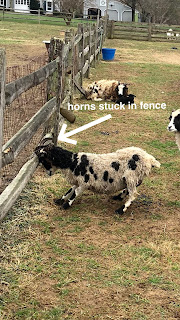In Animal Science this year, we focused on the year round responsibilities of the Homewind's farm. There many different ways to care for each of the animals on the farm and we used this course to learn how much goes in to taking care of the farm. We dealt with serious health issues involving the animals and had to listen very carefully to the guidance of Mr. Rabel. It was such a fulfilling course that allowed for us all to have a fun time getting work done. With a decently large class involved each day at the farm (Thursday and Friday), most of us were able to observe each other completing each task and learn so that we can apply our newfound knowledge on another day. We are so grateful for the experience and wish that we were Freshman so that we could immerse ourselves for three more years.
Home Sweet Home Winds
Monday, April 30, 2018
The ULTIMATE BLOG POST
This year in Animal Science, Ava fell in the mud and sheared her first sheep. She also ear tagged the kids and lambs. We picked the leftover apples for the animals in the fall and helped out with the bees before they mysteriously disappeared. Erin was one with the donkeys, her and Ava's favorite animals on the farm. She also got pecked by the chickens while testing their reflexes, something Ava and Julia were afraid to do. Julia was a big fan of Phillip, despite his pungent odor, and loved the cows. Kerry's favorite aspect of the farm was Rory the border collie. Rory is a newer addition, and she is learning to herd the animals. We go to the farm twice a week to work with the animals and help out with the farm. The rest of the week we learn about many aspects of farming and animals, including nutrition, reproduction, their digestive systems and genetics. Overall, this was one of our favorite classes, and we strongly recommend it.
Janie, the New Kid
On the morning April 26th, Astele gave birth to a new kid, Janie. Astele was born in March of 2017 by Phil. Janie is a third generation goat. The kid was significantly small. The farm has been an amazing experience and we are all glad that we were able to experience farm life and animal life. However, there has been a significant amount of weather change, which made it difficult to accomplish our tasks at the farm. This exposed all of us to the harsh reality of farm life and the responsibilities that Mr. Rabel has to endure. As seniors, it was an incredible experience and it will be hard to leave our farm family.
Review Of Animal Science
Animal science was such a great experience! We learned so much about animals and their behaviors which was very interesting. Although it was filled with fun and learning there were some negatives such as the weather that impacted our farm visits. We also did not have a chance to build something for the farm due to the weather. There were so many animals at the farm and there were many births this year. Some of the highlights of the year was smashing pumpkins for the goats and cows, watching a vet removed a cyst from a cow eye, shearing the sheep, and giving injections to ensure that the animals stay healthy. We will remember our time at the farm and all the learning experiences we have immersed ourselves in.
Monday, April 23, 2018
April The Baby Lamb
On April 16th, one of the sheep gave birth to a baby lamb, which we named April. On Friday of that week, we went to the farm and visited her. During our visit, we docked her tail. During a lamb birth, there is a number of events that occur within the process. When the ewe is in labor, the mother will usually lay on her side. Eventually, a water bag will appear and break, then the tip of the nose and feet of the lamb is visible. Towards the end, the ewe will also give birth to the placenta. The placenta usually comes out of the ewe 30 to
60 minutes after the birth of the lamb. Usually, the ewe will eat the placenta because her instincts tell her to hide the evidence that her lamb was born to protect it from predators.
Chicks!
Thursday, April 12, 2018
The GSB middle school is raising chicks, which are staying at Home Winds. We might or might not keep all of them, depending on the gender. The farm can only have three roosters, and we currently have one, so we can only keep two male chicks. However, there is no limit to how many female chicks we can keep. We won't be able to tell the genders of the chicks until they are four or five months old. Even though the chicks are all the same breed, there are differences in color; most are yellow, but sometimes they are grayish-brown.
The GSB middle school is raising chicks, which are staying at Home Winds. We might or might not keep all of them, depending on the gender. The farm can only have three roosters, and we currently have one, so we can only keep two male chicks. However, there is no limit to how many female chicks we can keep. We won't be able to tell the genders of the chicks until they are four or five months old. Even though the chicks are all the same breed, there are differences in color; most are yellow, but sometimes they are grayish-brown.
 |
| The chicks from 2014 |
 |
| This year's chicks |
Subscribe to:
Comments (Atom)


